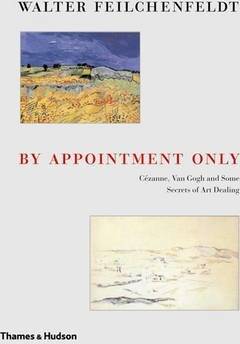
- Afhalen na 1 uur in een winkel met voorraad
- Gratis thuislevering in België vanaf € 30
- Ruim aanbod met 7 miljoen producten
- Afhalen na 1 uur in een winkel met voorraad
- Gratis thuislevering in België vanaf € 30
- Ruim aanbod met 7 miljoen producten
Zoeken
By Appointment Only
Cézanne, Van Gogh and Some Secrets of Art Dealing
Walter Feilchenfeldt
Hardcover | Engels
€ 83,45
+ 166 punten
Omschrijving
One of the most distinguished experts on van Gogh and Cezanne sums up a lifetime of research and discoveries.
In the art trade, research and judgment meet in a special way. Good or bad, genuine or fakethese are questions that often prove to be more urgent and to have more repercussions than in the academic field.
This is especially true when it comes to the two great forerunners of modern art: van Gogh and Cezanne. Unrecognized outsiders in their lifetime, their paintings grew in the twentieth century to be the most sought after and expensive works in the entire art market. How this astonishing development came about, what tangled paths these paintings took, and what fakes and false attributions played a part in thisthese are the subjects Walter Feilchenfeldt discusses, with the advantage of his forty years of experience as an international adviser in the art trade. He explores a great number of new sources of provenance and deals with questions of authenticity on the basis of direct comparison. 500 illustrations, 387 in color.
In the art trade, research and judgment meet in a special way. Good or bad, genuine or fakethese are questions that often prove to be more urgent and to have more repercussions than in the academic field.
This is especially true when it comes to the two great forerunners of modern art: van Gogh and Cezanne. Unrecognized outsiders in their lifetime, their paintings grew in the twentieth century to be the most sought after and expensive works in the entire art market. How this astonishing development came about, what tangled paths these paintings took, and what fakes and false attributions played a part in thisthese are the subjects Walter Feilchenfeldt discusses, with the advantage of his forty years of experience as an international adviser in the art trade. He explores a great number of new sources of provenance and deals with questions of authenticity on the basis of direct comparison. 500 illustrations, 387 in color.
Specificaties
Betrokkenen
- Auteur(s):
- Uitgeverij:
Inhoud
- Aantal bladzijden:
- 322
- Taal:
- Engels
Eigenschappen
- Productcode (EAN):
- 9780500976562
- Verschijningsdatum:
- 17/05/2006
- Uitvoering:
- Hardcover
- Formaat:
- Genaaid
- Afmetingen:
- 203 mm x 284 mm
- Gewicht:
- 1601 g

Alleen bij Standaard Boekhandel
+ 166 punten op je klantenkaart van Standaard Boekhandel
Beoordelingen
We publiceren alleen reviews die voldoen aan de voorwaarden voor reviews. Bekijk onze voorwaarden voor reviews.











